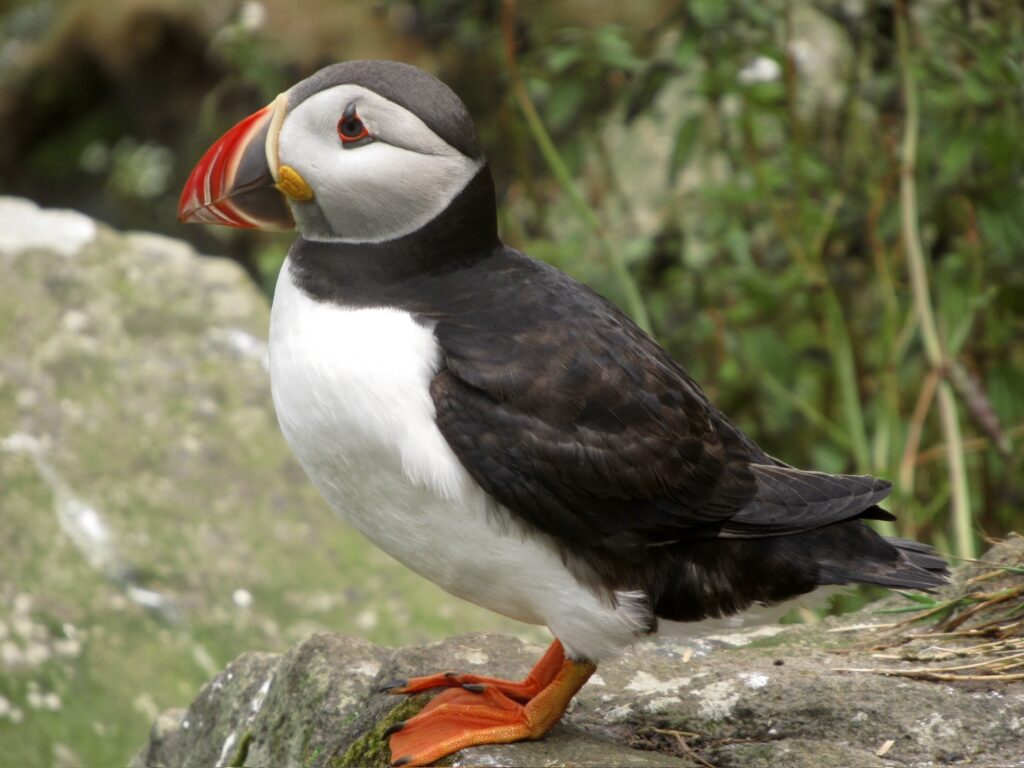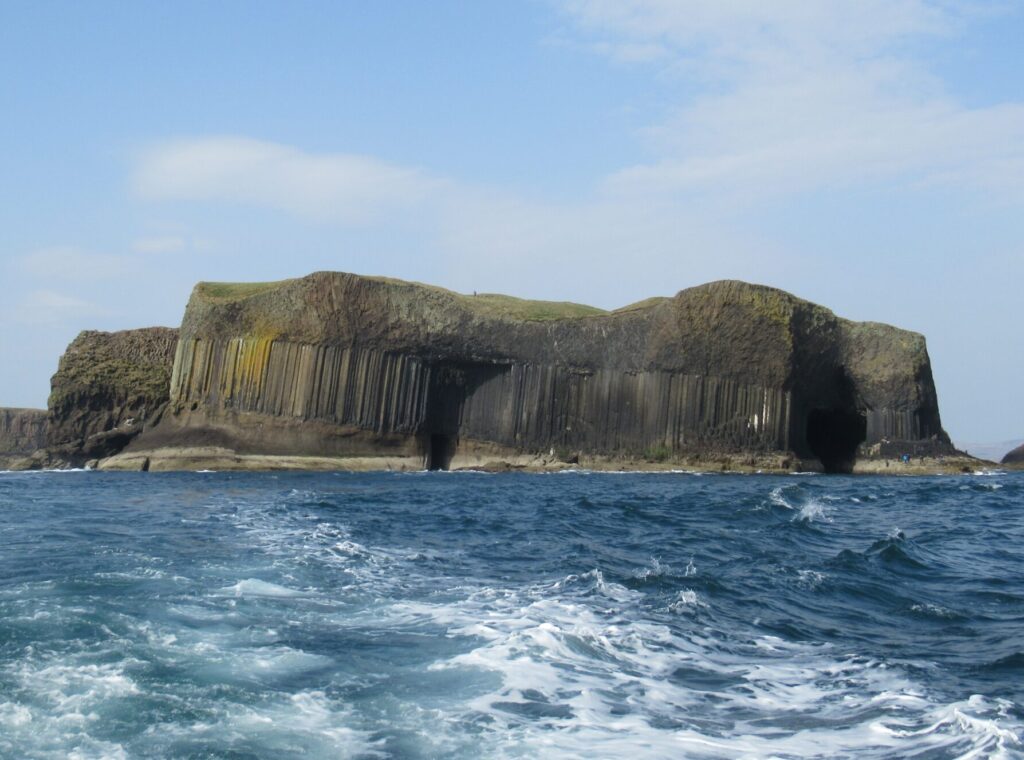The Isle of Staffa: Scotland's Geological Masterpiece
The Isle of Staffa truly is a geological masterpiece, carved by the hands of nature around 60 million years ago. It’s a place that feels otherworldly, a spot you simply cannot afford to miss on your journey through Scotland. Trust me, when the boat turns to reveal the southern face of the island and Fingal’s Cave comes into view, you may find yourself needing a moment to pick your jaw up off the deck.
But Staffa isn’t just about breathtaking beauty. This tiny island has hosted many famous guests including Queen Victoria, Sir Walter Scott, and J. M. W. Turner. Today, we are going to retrace their footsteps to uncover what it is about this island that has captured imaginations for centuries.
From practical tips on how to get there, to an exploration of its fascinating geology and thriving wildlife, we’ll also share the legend of Fingal’s Cave. Get ready to join us on a journey into one of Scotland’s most magical and storied corners.
How to get to the Isle of Staffa
The Isle of Staffa, a remote Hebridean treasure, offers no overnight accommodation, making boat trips from neighbouring locations like the Isle of Mull (Fionnphort, the Ulva ferry terminal and Tobermory), Iona, and Oban (on the mainland) the best way to visit.
For the most memorable experience, consider planning your trip between April and early August, during the seabird nesting season. This is when Scotland’s cliffs come alive, including the return of the nation’s sweetheart, the North Atlantic Puffin. Staffa hosts up to 450 nesting puffins but if you’re eager for a closer encounter, think about extending your boat tour to the Isle of Lunga, home to an astonishing 13,000 puffins!
This isn’t the only wildlife that you will see on this tour. When I took the wonderful boat trip with Turus Mara we spotted the White-Tailed Sea Eagle, Seals, Dolphins and other nesting seabirds!

Puffin on Isle of Lunga
To make the most of your visit and allow flexibility in case rough sea conditions disrupt your plans, spend a few days exploring the breathtaking Isles of Mull and Iona before your boat tour.
- The Isle of Mull is a hub for wildlife enthusiasts, offering opportunities to spot otters, seals, and majestic golden and sea eagles. It’s also a treasure trove for geology lovers, with fascinating sites like MacCulloch’s Fossil Tree, Fossil Leaves, ammonites and MacKinnon’s Cave.
- Iona, on the other hand, is steeped in history, renowned as the birthplace of Christianity in Scotland, where St Columba founded a monastery in 563 AD.
Want to visit the Isle of Staffa from Edinburgh on a private or group tour?
Checkout our 4 Day Isle of Mull and Staffa Tour or our ultimate 9 Day Mull, Islay and Staffa Trip today
Isle of Staffa Geology
Once you arrive at the Isle of Staffa and gaze upon the towering geological masterpiece, the origin of its name becomes crystal clear. Staffa is derived from the Old Norse meaning ‘pillar’ referring to the towering columns of basalt which make this island and the Giant’s Causeway in Northern Ireland so famous. But how exactly were these extraordinary columns formed?
Around 60 million years ago, the Palaeogene age began, Greenland and North America split away from North-Western Europe opening up the North Atlantic Ocean. As the Earth’s crust thinned, volcanoes erupted across what is now Scotland including Ben More on the Isle of Mull, Skye, Arran, Ardnamurchan and St Kilda.
These volcanic eruptions have created the three distinguishable layers of the Isle of Staffa which we can see particularly in the left hand side of the photo below.
- Volcanic Ash Layer (Base) – The smooth, greyish base of the island is formed from volcanic ash, created during explosive eruptions. Fine ash particles were ejected into the air before settling and compacting over time into a solid, smoother layer of rock.
- The Colonnade (Middle Layer) – The most spectacular layer was formed when molten lava slowly cooled from the ground up. As the lava’s temperature dropped below 1,000°C, it began to solidify and contract, causing cracks to form (like with dried mud). These cracks eventually created the hexagonal shapes we see today. Remarkably, from what we understand this process took several decades to complete on Staffa.
- The Entablature (Top Layer) – a more fragmented and chaotic layer. Here, the lava cooled much faster due to exposure to the atmosphere and rain, creating irregular patterns. It’s believed that water seeping into cracks may have also sped up the cooling process, contributing to its unique, less uniform appearance.
Lines of weakness in the basalt have allowed the relentless sea to carve caves into the island’s sides, the most famous being Fingal’s Cave.

The Legend of Fingal's Cave
Long ago, two rival giants; Fingal of Ireland and Benandonner of Scotland were destined to collide in an almighty battle. To do this, a stone bridge was built stretching from the Isle of Staffa to the Giant’s Causeway in Ireland.
However, neither giant had seen the other before. As Benandonner stormed across the causeway, Fingal saw his rival’s immense size and realised he was no match for the towering figure.
Fingal’s clever wife, Oona, devised a cunning plan. She disguised Fingal as a giant baby and tucked him into a cradle. When Benandonner arrived in Scotland and saw the enormous “child,” he was struck with terror, imagining how colossal the father must be. In panic, Benandonner fled back to Ireland, tearing up the causeway behind him.
Today, the remnants of their rivalry can still be seen at Fingal’s Cave and the Giant’s Causeway—lasting monuments to a legendary tale of wit over brute strength.

1 comment
Awsome blog! I am loving it!! Will come back again. I am taking your feeds also.
Comments are closed.